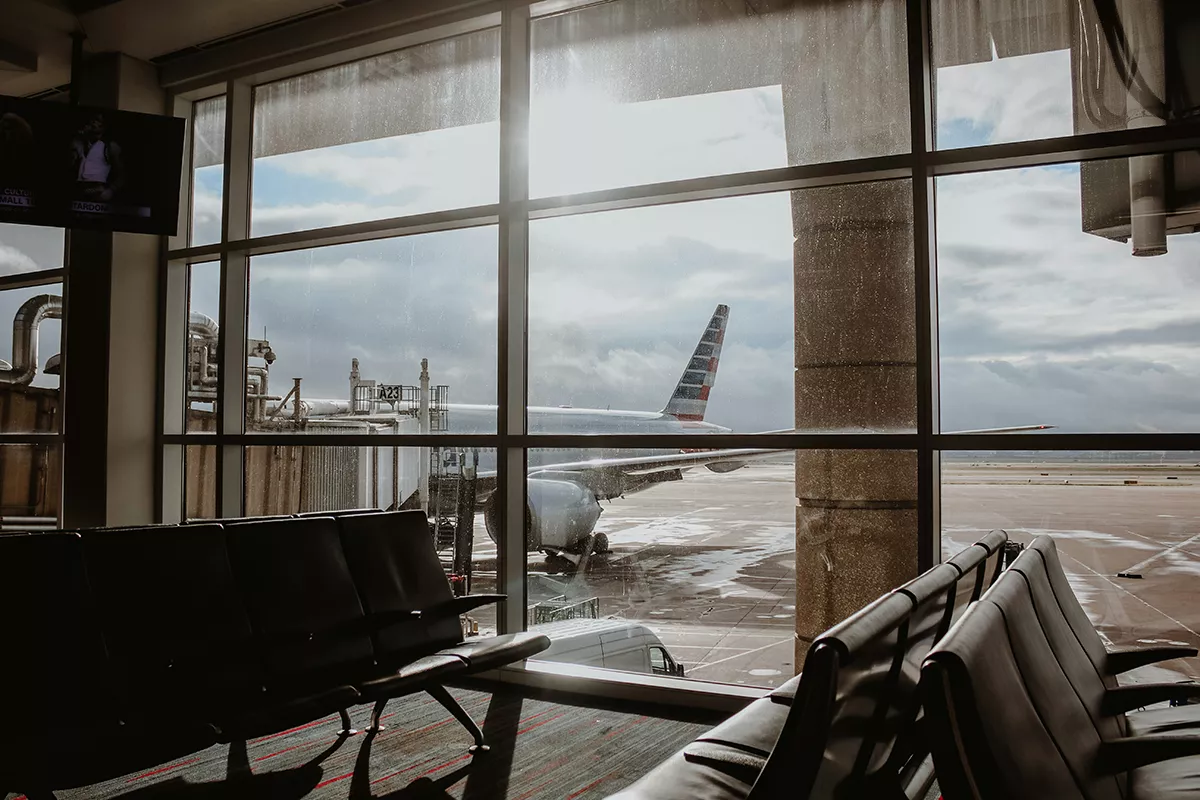When I was a student at U.P. Diliman in the 1980’s, my friends and I hardly ate at the canteens or cafeterias around the campus. We would prefer to take the jeepney ride to Katipunan Avenue and eat at “Katips.” Our every day viand was “Grilled Liempo” with unlimited rice for 50 Pesos. It was packed every day! As a student, I thought it was good business and wondered if it was possible to start a carinderia with small capital.
Fast forward 30 years later and the entire Katipunan area has become another reminder or modernization or perhaps a victim of crass commercialization. If there were still carinderias in the vicinity, they were overshadowed by cold, gray structures fronted by brightly colored mascots and neon signs. I would not have foreseen the day Katipunan Avenue would be overrun by malls.
While fast-food has become a way of life, it does not have the magic of the carinderia. Sure, you have pressure fryers to make sure your chicken is properly cooked, and the rice is neatly wrapped in wax paper. But it does not feel like home.
The carinderia is our kitchen away from home. Familiar scents, flavors, and sights; tastes that trigger memories both good and bad. No matter how horrible a day I was having in college, “Katips” always brought a smile to my face and made the problems go away.
But the carinderia has not gone the way of the dinosaur. They will always exist because it is part of our culture. Filipinos want the taste of a good home cooked meal. Damn be the carbs or the strips of fat! The fattier the food, the tastier and the more rice we eat. See the layer of oil on the surface of the sauce? That is full bodied flavor!
Many of the people who patronize carinderia food are blue collar workers who are concerned less about the calories than the energy it gives them to finish work for the remainder of the day.
In the surrounding areas in my neighborhood, there are carinderias every few blocks. They serve food ranging from pork barbecue, spaghetti, Chicken Afritada, grilled liempo and the ubiquitous adobo. There is a carinderia that serves nothing but rice porridge and noodles.
Come lunchtime, and these are packed. There are a few office workers interspersed with the blue collars; everyone finding their space in a wall of monobloc tables and chairs. Some have lines forming outside the small eatery. I suspect Anthony Bourdain would love it here.
The largest carinderia in the area featured a “Dampa” style of service. For those who may not know, “Dampa” is a type of service where the diner selects the ingredients from a wet market and instructs the cook how it should be prepared. I did not try the food because there is no ocean in sight. I am not sure just how fresh the food is. But the place is always packed.
There is a ready market for a carinderia business. If you are thinking of getting into this type of retail food business, here is how to start a carinderia with small capital in the Philippines.
Table of Contents
ToggleHow to Start a Carinderia using a Small Capital in the Philippines
1. Create the Menu
There is nothing complicated about carinderia food. The menu is made up of the most popular and beloved home cooked meals:
- Adobong Manok at Baboy
- Adobong Kangkong
- Chicken Afritada
- Pork Menudo
- Pork Sinigang
- Pinakbet
- Laing
- Inihaw na Liempo
- Longanisa
- Bicol Express
- Pork Barbecue
You do not have to serve an extensive menu. You can select 3 to 5 dishes at a time and make sure to have plenty of rice! Filipinos are voracious rice eaters, and extra rice is a cheaper way to get full.
Be careful of serving food that is prepared with dairy such as Laing because it may spoil easily.
2. Register Your Business
It is always a good idea to register your business as a legal entity for the following reasons:
- Apply for tax incentives or exemptions
- Secure better terms with suppliers and creditors
- Present a professionalize image for your business
If you want to be a sole proprietor or plan to get a partner, you can register your business with the Department of Trade and Industry or DTI. If you want to register as a corporation, you have to register with the Securities and Exchange Commission or SEC.
There are advantages and disadvantages to either form of business entity. However, I would recommend registering as a corporation. The food business is very demand elastic, and there are many factors to consider in improving sales. If you are on credit terms with your suppliers, you may find yourself in debt if sales do not pick up.
As a corporation, your liabilities are only equivalent to some of its assets. But as a sole proprietorship or partnership, your creditors can run after your personal assets.
Related: 5 Essential Business Permits and Licenses in the Philippines
3. Identify Your Budget
Starting a business comes down to one question, “How much funding do you need to start your business?”
It takes money to make money. Thus, if you want to start a carinderia, you need to have startup money that will cover store improvements, equipment, initial inventory and working capital.
The first thing you need to do is to draw up an estimate for improvements and other expenses. Assess the size of the kitchen, the dining area and determine what equipment you need to run operations.
Ideally, you should only allocate 20% to 30% to kitchen space and the rest to dining so you can maximize earnings. A carinderia does not need a large kitchen space. Most of the time, cooks only use the following:
- Wok Fryer
- 2 Burner Stove Top
- Rice Cooker
- Bain Marie
- Ref/freezer
Most of the cooking are done well in advance and are displayed inside the Bain Marie, which is kept warm by hot water. The Bain Marie is large enough to display 3-4 dishes plus rice.
Here are a few tips to save up on equipment costs:
- Buy at auctions; I bought a 20 cm. chest type freezer for only 500 Pesos at an auction.
- Buy at second-hand stores.
- Use food warming pans instead of the Bain Marie.
- Set up the carinderia at home.
- Rent the tables and chairs or buy them at an auction.
You should have working capital that will cover operations for six months. Start out with minimum personnel. You need one cook and one assistant in the kitchen. Handle the cashiering duties and inventory management for the meantime.
Set aside 50% of your daily sales to cover food cost. You and the assistant should attend to the buying of ingredients every day. Your working capital will cover shortfalls in case sales fall below targets.
Rent is always a business killer. Lessors tend to have usurious rental policies for food retailers. They believe as a cash business, the food business is liquid. This is why if you can run the carinderia at home, your chances of making money become exponentially higher.
You will have to assess your sources of funding. The first place to look is your available cash on hand. If you have a full-time job, your income could provide funding for shortfalls when needed.
The approach of funding your business with savings and income is called bootstrapping. The idea is to invest readily available sources of funding until such time that the business can sustain itself.
Many entrepreneurs do this, but it is quite risky because the start-up stage carries so much uncertainty. Consider getting a partner or a few investors in your carinderia business.
All told 25,000 Pesos should be more than enough to cover your cost of equipment plus a few improvements and initial inventory.
4. Location! Location! Location!
Because carinderias offer low-cost food items, you have to generate enough volume to cover your expenses. Ideally, you should set up your carinderia in a high foot traffic location that is accessible to workers, students, and nearby residents.
I have seen some carinderias generate good business beside government agencies or the municipality. In Makati, carinderias are mobile. The city government rents out mobile stores which they can set up in designated areas around the Central Business District. I understand the rental cost for one mobile carinderia is 15,000 Pesos per month.
To cover the cost of rent, you must keep it below 20% of gross sales. Thus, your target sales per month should be 75,000 Pesos or 3,500 per day.
Again if your house is located in an open area that is accessible to public transportation, then you can build an annex for the carinderia. It will save you rental costs, lower capitalization expenses, and overall monthly operational expenses. This eases the pressure on sales to generate sufficient income.
If you are confident of the quality of your food and your establishment is registered as a corporation, you can apply as a consignor for food services at schools or offices. Some schools only charge a small percentage of sales as rent.
5. Test Your Food
The number one rule in the retail food business is to ensure the quality of your food. It doesn’t matter if you are selling lower priced food. Customers from all walks of life deserve good quality food.
Anthony Bourdain said it best when he traveled to Brazil and sampled Feijoada, traditional Portuguese food which is often referred to as “poor man’s food.” According to Bourdain, the biggest mistake people make is to associate quality food with expensive ingredients. You can make good food as long as you know how to identify quality and it does not have to be expensive.
This is the advantage of going to market and personally overseeing the purchase of materials. You can check the quality of the meat and produce; build a good relationship with a few vendors to ensure they set aside the best ingredients for you all the time.
Most people are not aware that the best fine dining restaurants in the world use fresh ingredients. The Executive Chef buys the ingredients directly from the market. Some even forage in nearby parks for fresh herbs and spices.
Once you have procured good quality ingredients, cook the items in the menu and subject them to random taste tests. Personally, I prefer to get people I don’t know to sample my food. This way I am assured there are no biases.
Tweak the recipe until you get it right. Keep in mind that people’s tastes differ and you should never expect to satisfy everyone. Adjust the flavor until such time the recipe gets more favorable reviews.
Related: How to Start a Small Food Business in the Philippines
6. Focus on Cleanliness and Sanitation
Since my days in college, carinderias have been the subject of much controversy because of health issues. One of our favorite carinderias within the UP campus was shut down after cases of hepatitis were connected to their food.
There have been reports from local health agencies which have analyzed the ingredients used by some carinderias, and the results will certainly ruin anyone’s appetite. Some proprietors resort to scrimping on the quality of ingredients to save up on food cost.
If you plan to put up a carinderia, this is one of the challenges you will face. You have to ensure your customers that your food is clean and safe to eat. Here are some tips for you to consider:
- Keep your carinderia clean at all times; sweep as often as you can
- Keep pets, stray animals away from your kitchen and dining area
- Dispose of garbage frequently and in an orderly manner
- Keep the kitchen work area clean. Instruct everyone to clean as they go
- Use electric fans, candles, and mosquito coil to keep flies and mosquitoes away
- Make sure all food served are properly covered
- Sanitize all kitchen utensils, plates, bowls and pans in hot water and anti-bacterial solution.
- Consider using disposable utensils.
- Have all personnel undergo health clearance before hiring them
- All cooks and servers must wear hair nets
- Have sanitizers available in the kitchen and serving area
- Have separate tongs and spatulas for turning raw meat and placing cooked food in plates
- Have trash cans located away from food preparation areas
- Dispose of used oil properly
- Store items properly
- Patronize only suppliers who can consistently provide good quality ingredients
- Rotate dishes from the freezer to the refrigerator every two days
- If you are not sure of the quality of the ingredient or the food, throw it out
- Knives and cutting boards are vulnerable to contamination. Make sure these are frequently washed in anti-bacterial solution
- Do not turn in for the night until the carinderia has been properly cleaned
- The following day, wash all plates, utensils, and cutlery again.
It takes time to sanitize properly and clean the carinderia, its tools, and equipment. But it is time well spent to ensure the safety of your customers.
7. Lay Down the Law
If you want your carinderia business to succeed, you have to run it professionally. It is your source of income and how you manage it will determine its profitability.
Many small business owners close up because of poor management practices. A carinderia is subject to this because it is a high volume, cash earning business. Turnover of ingredients is comparatively fast, and money flows in and out at a high rate.
Here are important guidelines that you must strictly implement in your carinderia:
- No Credit terms! This is the number reason carinderias and sari-sari stores fail. It’s a cash business, yet the owner allows customers to eat on credit. When a customer cannot pay up, your cash flow is affected because you have expenses to cover. Before you know it, you are in debt yourself!
- Keep track of inventory. Inventory management can affect food cost due to pilferage and wastage. You should also never run out of ingredients.
- No freeloaders. Another problem with carinderias is that family and close friends expect to eat for free. Do not allow this to happen. If they care and respect your business, they should pay for their food.
- Personnel cannot use the store’s ingredients. There are personnel who “assume” they can use the store’s ingredients to cook their food. They reason that they bought the meat anyway. All they need are some seasonings and your oil. Do not allow this to happen. Frequent usage will affect your food cost and inventory levels. Personnel should be responsible for their food. The most you can do is to sell the ingredients at cost.
Start a Carinderia Business with Small Capital
A carinderia is a good business to run because you can start it with small capital. Despite its lack of scale, managing a carinderia takes hard work. If you want to be successful, you should focus on building a market of loyal patrons. The best way to do this is to be consistent in the quality of your food, service and to ensure the cleanliness of your carinderia.
Ricky Sare is a writer, an entrepreneur, and a member of Tycoon Philippines editorial team. He is also the owner of Benchmark Global Management Solutions, Inc., a BPO company located at Makati.





